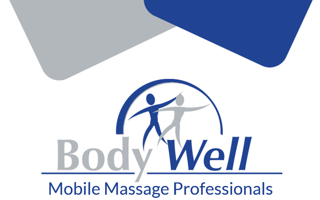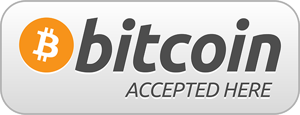As we deal with the repercussions of the global novel Coronavirus or COVID-19 epidemic, the massage therapy industry faces new questions about the practice and administration of massage therapy.
As a Licensed Massage Therapist and 15+ years massage business owner, I have some questions I’m pondering, and some thoughts as we deal with the crisis and look beyond.
Mobile Massage
"*" indicates required fields
Please note, these are personal opinions and not company policy statements. I am not a doctor or scientist giving medical advice. Like many people, my understanding of the epidemic grows each day.*
Questions:
- What safety measures can and should be taken by massage businesses and independent massage therapists?
- Are universal long-term changes required to our practices or do we only need to adhere to a certain set of standards when there is evidence of a Coronavirus or Covid 19 outbreak?
- Can corporate chair massage or any type of group chair massage be performed safely? What special measures might be taken in that context to prevent any transmission of Coronavirus?
- Will massage consumers return to the same purchasing patterns as before the viral outbreak and will we see preferences shift in any particular direction?
In time and in hindsight we will know the answers to these questions. However, at this time as we face so much uncertainty, one can only begin to speculate.
Short and Near Term Industry-Wide Issues
It’s too early to say what long-term changes might be either mandated or preferred by consumers and the providers in the massage therapy industry. Looking at what we have to deal with right now and in the many coming months, there are options available that can make the practice of massage safer.
Some of these concepts may be applied more routinely in the future, regardless of an outbreak, if it makes things safer without being a heavy burden on therapists or clients.
Before we can get to that though, we must acknowledge that there are certain governmental executive orders at the state levels that are restricting the ability of various healthcare services and other types of services to operate. This includes massage establishments in many cases.
When there is a clear order to close all massage offices it should, of course, be adhered to. The one thing we must be careful about is misinterpreting these orders.
In some cases they may restrict a certain kind of activity, for example having a massage clinic or a massage parlor (or whatever they decide to call it in the order) but they may not expressly prohibits other activities, for example consenting individuals having one-on-one therapy at a private residence.
There are also currently orders using language such as “medically necessary” which can be vague and interpreted differently. One might argue that if the massage is medically prescribed, by a doctor, then it is considered medically necessary.
Body Well has many patients with medically prescribed therapeutic massage, so this is quite relevant to us.
But what about the person who had their therapy prescription run out, but they continue to pay out of pocket for weekly massage to control pain and give them normal daily function? Is that not medically necessary?
To that patient, it may very well be. The bottom line is that in most cases, it will be a decision much better left to the practitioner and the patients rather than left up to the government to decide.
Sanitation More Important than Ever
Now, assuming there is no order or other legal restriction on the practice of in-home massage therapy, there are certain protocols and safety measures that should be in place – at all times to begin with, frankly.
Responsible professional massage therapists are always keeping all of their equipment in a highly sanitized and hygienic condition. They are also using proper techniques for thorough hand-washing with soap and taking other sanitation measures that will prevent the transmission of any virus or disease.
These techniques are useful in preventing the transmission of seasonal cold and flu viruses, and they are also useful in preventing the transmission of COVID 19 novel Coronavirus.
Of course the major difference and the the challenge to society with COVID-19 is that it is much deadlier than a normal Coronavirus flu. So with that, what more could be done for people in and around massage therapy to protect themselves and others?
Increased Use of Masks and Respirators?
This is where we get into a discussion about the short, medium and long-term use of different types of masks when performing massage. In using the term “masks” we are also talking about N-95 respirators as well as more common surgical tape masks worn on the face.
The N-95 respirator, used by everyone from dentists to handymen doing renovation projects where there is a lot of dust, filters out much smaller particles than a regular mask. It also fits tighter around the nose and mouth.
This is a more medical grade option that protects both the wearer and those around them from respiratory infections.
A more traditional type of face mask or surgical mask is still useful, even though it does not do everything that the N 95 respirator does. One of the best uses of a surgical mask is to catch coughs and sneezes coming from the person wearing it.
In this sense it’s more about protecting the people around the person wearing it from infection (patients, clients). It also does provide some level of particle filtration, like larger droplets from a sneeze.
I do not want to neglect to mention, although I think it goes without saying, that anyone who shows any kind of Coronavirus symptoms should neither provide or receive a massage. No exceptions.
Different Safety Levels During “Orange and Yellow Alert” Stages?
Can massage be performed safely in the current environment, and what about going forward?
Assuming all of the hygiene practices are air tight, I believe that different scenarios may call for different combinations of masks being used by either the therapist, the patient/client, or both.
In the case where an individual has a compromised immune system, regardless of the scenario they may want to use an N 95 respirator when having any visitor come into their home at all.
In the case of increasing or peaking infections and stay at home orders, this is a Red alert and it is highly unlikely that massage would be a good idea, permitted or not.
In the case where we are in an Orange alert type of stage where there is an outbreak but there is no shelter in place or other law forbidding it, and neither the therapist or patient are showing signs or symptoms of any viral infection, can they do it safely? How?
In the case of a healthy individual, I would argue that during an Orange alert phase, meeting all of the pre-conditions already mentioned, that if the therapist uses the proper hygienic protocols and wears an N-95 mask during the entire encounter at an individuals home, it is possible to virtually eliminate the potential for transmitting a virus respiratory virus.
Think about it: doctors and dentists work around patients all the time with all kinds of potential viruses, including HIV. The key is, they learned how to do it safely for everyone involved.
That is the way massage therapists need to start thinking, as we may face a new type of reality with Coronavirus and whatever comes next.
I would say when we are not in as critical a stage of an outbreak (think Yellow alert), such as on the backside of the bell curve, or even likewise during the normal seasonal flu, a therapist may well consider using a normal comfortable surgical mask during routine treatments.
This provides some level of protection for both without being too much of a nuisance.
Bear in mind that it is not uncommon in parts of Asia in other parts of the world for massage therapists to routinely wear a light surgical mask. It is not so common in the United States, at least it has not been in the past.
On Site Chair Massage and Coronavirus?
What we noticed at Body Well was that, not surprisingly, it made sense for all of our corporate clients to postpone their services until things have calmed down and the virus has run its course. No one is at their offices to receive massages anyway!
But what about when things return to something closer to normal? Should we permanently implement some different protocols for chair massage services and the prevention of respiratory diseases like COVID-19?
I would argue that the industry may want to adapt new standards of practice, where chair massage therapists are using face-mask protection more frequently.
There is an ability in that context for a therapist to unwittingly become a “super spreader” when touching and breathing on dozens of people within the course of a few hours at an office or event.
During heightened times of potential outbreaks, should chair massage services go on, an upgrade to an N-95 rated mask would probably be advisable.
As I have mentioned to our Body Well therapist on multiple occasions already, sanitizing the heck out of the face rest portion of their chair and the areas where the hands touch is absolutely critical. I would rather have a chair smell like Lysol instead of lavender and prevent an infection, or even someone’s death!
Massage and the Future, post-Coronavirus
We are all making adjustments, and will continue to do so. The sooner the massage industry can come to some consensus on safety practices, the sooner we can gain the trust of our clients.
We need to get them back to booking so we can get back to doing what we all love to do; helping people to feel better. (Paying the rent is also an important benefit of our work that is not lost on any of us).
The one thing I would caution in doing any of this however; let’s try to figure this out as much as we can on our own without inviting unnecessary government interference into our affairs as a profession.
The more we can self govern the less chance we will have onerous state and federal government restrictions that may not be in our best interests. Let’s not forget how the Florida Legislature stripped away Massage Therapist’s ability to bill for auto injury therapy a few years ago.
The massage industry can withstand the challenges before us. Let’s start thinking about what we need to do now and post-COVID 19 so we will get back on our feet and on onto people’s backs, necks, hips and feet ASAP!!! In the meantime, stay safe, and hang in there. We will make it through and rise again together.
Dan Melmed, LMT
Owner & Founder, Body Well Therapy






